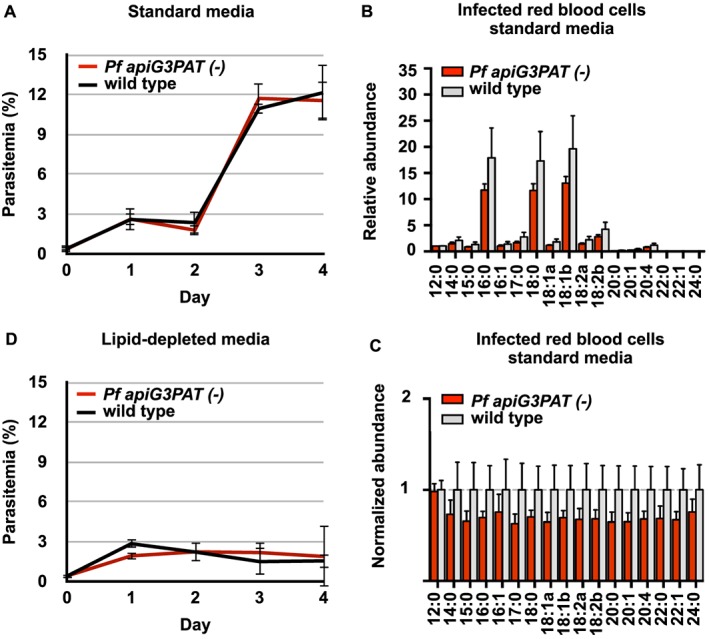Figure 3.

Pf apiG3PAT (−) and wild type parasites show similar growth on standard and lipid‐depleted media and have comparable lipid fatty acid profiles. A. Pf apiG3PAT (−) and wild type parasites show similar replication rates in standard media in a four‐day blood stage growth assay. Error bars show mean of three biological replicates ± standard deviation. B and C. Relative and normalized fatty acid abundance in lipid extracts from magnetically isolated Pf apiG3PAT (−) and wild type infected red blood cells grown in standard media. Importantly, although the mean values were consistently lower in Pf apiG3PAT (−) samples, these differences were non‐significant as determined by a t‐test (p‐value >0.05). Error bars show mean of four biological replicates ± standard deviation. See Supplementary Table 2 for all values. D. Pf apiG3PAT (−) and wild type parasites show a similar decrease in replication rate when transferred to lipid‐depleted media containing only the minimal fatty acid supplementation required for growth, suggesting the enzyme is not required for growth in these conditions.
